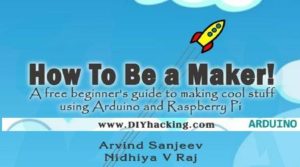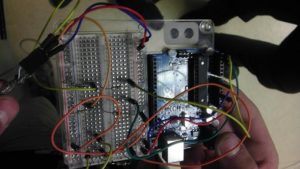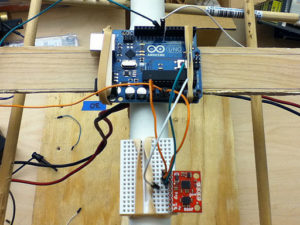
Help! My favorite tech gadget has been phased out!
Google Glass, despite its successful use in health fields, did not reach the popularity needed to succeed in the marketplace, and was officially phased out in January, 2015. But the idea is still there, and if you use Arduino electronics, you might make one yourself. That’s the power of Arduino.
Many people who want to participate in technology find inspiration by attending Maker Faires (since the Maker movement started in 2006) and seeing a project they could make themselves, adding possibly their own modifications.
The maker culture is a contemporary culture or subculture representing a technology-based extension of DIY culture[citation needed] that intersects with hacker culture which is less concerned with physical objects (as opposed to software) and the creation of new devices (as opposed to tinkering with existing ones). Typical interests enjoyed by the maker culture include engineering-oriented pursuits such as electronics, robotics, 3-D printing, and the use of CNC tools, as well as more traditional activities such as metalworking, woodworking, and, mainly, its predecessor, the traditional arts and crafts. The subculture stresses a cut-and-paste approach to standardized hobbyist technologies, and encourages cookbook re-use of designs published on websites and maker-oriented publications.[1] There is a strong focus on using and learning practical skills and applying them to reference designs[citation needed].
Source: Wikipedia, “Maker Culture”

Image by By Thctamm (Own work) via Wikimedia Commons:
An Arduino Uno board with a breadboard, some wires and resistors. This image was uploaded as part of Estonian Science Photo Competition.
The Arduino microcontroller has brought DIY technology within the reach of anyone who can follow instructions and plug in wires onto an electronics board.
Projects using the Arduino microcontroller are top billings at Maker Faires around the world. A list of Faires and Applications to demonstrate projects are available online, and due by February 21 for the May, 2016 San Francisco Maker Faire.
The list of project types wanted includes such things as electric cars and chemistry projects. But top on the list are projects able to be achieved by use of the Arduino board:
- Student projects
- Robotics
- Homegrown Drones
- Arduino projects
- Raspberry Pi
- Space projects
Those aren’t professionally done projects, and they don’t have to be very complete. They just have to work, and the presenter must want to explain and present the project.
The Arduino community has instructions for many projects, and many of them can have variations unique to the inventor. How about a robot that can function within 5 “degrees of freedom,” like this one? This picture depicts a 5 degree of freedom (DOF) sensor by SparkFun, an Arduino Uno, a breadboard, and wiring. The circuitry is on a seesaw for tilt testing.

It’s abstract, but it operates and produces practical results. You, perhaps, as the operator and electronics engineer, made it. That’s the miracle and appeal of the Arduino microcontroller.
Plus, every observer knows it’s not easy, and appreciates the achievement, so it generates a sense of being connected to something special when an observer sees or knows someone who has made the working project and can explain how it could be used, or why it works.
Ever since the Arduino board came to market in 2005, budding geniuses with an electronics and coding bent have embraced the power that microcontrollers can put within an interested person’s grasp. One can’t help but speculate that the first Maker Faire in 2006 (in San Mateo, California) may have inspired in part by the Arduino and its possibilities.
Digital and analog I/O pins can be interfaced to various expansion boards (“shields”), circuits, sensors and actuators, all hooked up to an Arduino board of some kind, and a breadboard (circuit board).
With a simple switch, voice activation, or a few lines of code from a computer, the envisioned apparatus may be activated remotely.
If one can think of a product that could be run by sensing light, sound, magnetic force, or some other type of energy, that product can very likely be made using an Arduino board, as long as it can be conceived in the form of a circuit which accepts commands, and derives its power from a battery or from a computer’s USB port.
The Arduino board inventor can employ cameras, lenses, microphones, light, chemical sensing, movement sensing, responding to an on-off command. How far can one take this DIY activity?
To see for yourself what Arvind Sanjeev and Nidhiya V. Raj at www.DIYHacking.com have done with this DIY technology, by visiting the www.DIYHacking.com blog.
Featured image of Google Glass by Antonio Zugaldia via Wikimedia Commmons.
Visit the next page to see how Sanjeev made his own “google glass” using a version of the Arduino Board called a Raspberry PI, and find the link to the DIYHacking.com free guide, “How To Be a Maker.”



